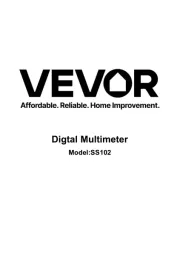Amprobe 15XP-A Manual
Læs gratis den danske manual til Amprobe 15XP-A (84 sider) i kategorien Multimeter. Denne vejledning er vurderet som hjælpsom af 25 personer og har en gennemsnitlig bedømmelse på 4.3 stjerner ud af 13 anmeldelser.
Har du et spørgsmål om Amprobe 15XP-A, eller vil du spørge andre brugere om produktet?

Produkt Specifikationer
| Mærke: | Amprobe |
| Kategori: | Multimeter |
| Model: | 15XP-A |
Har du brug for hjælp?
Hvis du har brug for hjælp til Amprobe 15XP-A stil et spørgsmål nedenfor, og andre brugere vil svare dig
Multimeter Amprobe Manualer










Multimeter Manualer
- Schneider
- Seaward
- Metra
- REV
- Topex
- Klein Tools
- Testo
- Laserliner
- GW Instek
- Stanley
- Sanwa
- Weidmüller
- Metrix
- Biltema
- Cosinus
Nyeste Multimeter Manualer









